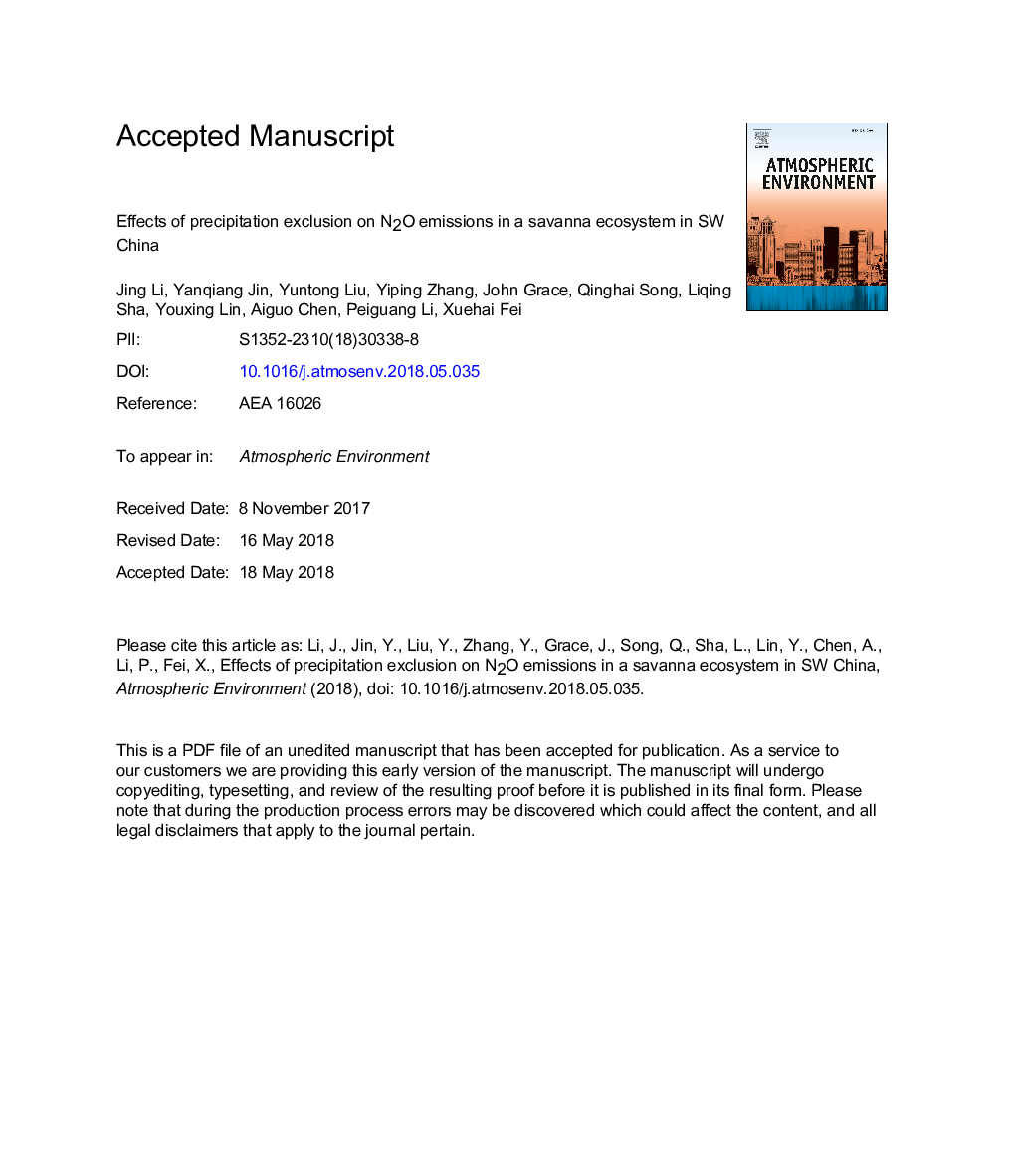| کد مقاله | کد نشریه | سال انتشار | مقاله انگلیسی | نسخه تمام متن |
|---|---|---|---|---|
| 8863592 | 1620287 | 2018 | 40 صفحه PDF | دانلود رایگان |
عنوان انگلیسی مقاله ISI
Effects of precipitation exclusion on N2O emissions in a savanna ecosystem in SW China
ترجمه فارسی عنوان
اثرات خروج بارندگی بر انتشار نیتروژن در یک اکوسیستم ساوانا در جنوب چین
دانلود مقاله + سفارش ترجمه
دانلود مقاله ISI انگلیسی
رایگان برای ایرانیان
موضوعات مرتبط
مهندسی و علوم پایه
علوم زمین و سیارات
علم هواشناسی
چکیده انگلیسی
Savanna ecosystems play a crucial role in global N2O emissions. However, our understanding of N2O emissions under limiting precipitation conditions is lacking. This study evaluates the effects of precipitation reduction on soil N2O fluxes from a woody savanna ecosystem in Yunnan Province, Southwest China. Precipitation exclusion shelters were installed above the tree canopy, and four total treatments were established as follows: a control (CK) and precipitation exclusions of 30% (PE3), 50% (PE5), and 70% (PE7). Two years (2015-2016) of N2O fluxes, soil temperature and soil water content data were collected. The N2O fluxes were generally low, ranging from 0.039 to 0.245â¯mgâ¯N mâ2 dayâ1, and they were strongly linked to precipitation events. Additionally, the N2O fluxes during the rainy season were significantly greater than those during the dry season. The maximum N2O flux was observed in August, and the minimum flux occurred in December. Precipitation exclusion had a significant negative influence on the N2O fluxes. The N2O emissions of CK, PE3, PE5, and PE7 were 0.20, 0.17, 0.13, and 0.12â¯kgâ¯N haâ1 yrâ1, respectively. With the exacerbation of precipitation exclusion, the decrease rate of precipitation exclusion on the N2O emissions increased over the entire year (eventually reaching 41.8% in PE7), but the decrease rate of precipitation exclusion on the soil N2O emission during the dry season was stronger than that during the rainy season. Additionally, the proportion of dry season N2O emissions to total annual emissions decreased (from 45% to 41%), and that of rainy season N2O emissions to total annual emissions increased (from 55% to 59%) over the year, whereas they exhibited a stable trend from PE5. The data show that the Yuanjiang savanna is a net source of N2O; precipitation reduction decreases the N2O emissions in the savanna regions, indicating that precipitation reduction can only slow the increase in the N2O concentration in the atmosphere and can therefore slow global warming. In addition, the N2O emissions during the dry season may play a significant role in total N2O emissions and be more sensitive to precipitation reduction than those during rainy season. These possibilities should be considered in future studies, especially in those ecosystems that experience substantial inter-annual climatic fluctuations.
ناشر
Database: Elsevier - ScienceDirect (ساینس دایرکت)
Journal: Atmospheric Environment - Volume 187, August 2018, Pages 1-8
Journal: Atmospheric Environment - Volume 187, August 2018, Pages 1-8
نویسندگان
Jing Li, Yanqiang Jin, Yuntong Liu, Yiping Zhang, John Grace, Qinghai Song, Liqing Sha, Youxing Lin, Aiguo Chen, Peiguang Li, Xuehai Fei,
